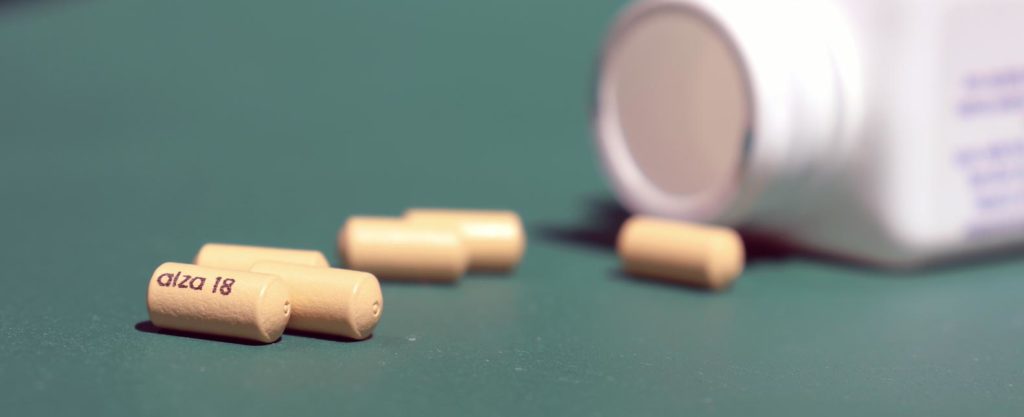In the world of stimulant-based prescription medicines, there are a handful of drugs widely abused by individuals looking for something that provides energy and euphoria. Medications like Adderall, Ritalin, Dexedrine, and Vyvanse, all widely abused by individuals of all ages and backgrounds, typically dominate the headlines regarding prescription stimulant abuse. More recently, a new prescription in this category has garnered attention from the media and authorities for its potential for abuse. Concerta, widely known as a “study drug,” has joined the ranks of the previously mentioned substances as a potentially addictive stimulant commonly abused by high school and college students.
However, unlike Adderall and Ritalin, information regarding Concerta isn’t as widely available due to its recent 2016 FDA approval and release. What do we know about this study drug, and why are so many teenagers and young adults becoming addicted to it?
What is Concerta?
Table of Contents
Concerta is a stimulant-based prescription medication that works by affecting the central nervous system. The active ingredients in the medication alter the brain chemicals that control hyperactivity and an individual’s impulse control.
The drug is formulated to act as an extended-release prescription medication intended to treat attention deficit hyperactivity disorder, otherwise known as ADHD. Concerta’s primary ingredient is methylphenidate HCl USP, which is a white, odorless powder. This drug’s four different formulations are available, consisting of 18, 36, 54, and 72 mg, respectively.
Dosage
The dosage of Concerta varies based on the age of the user and the severity of their condition. This medication comes in 18, 36, 54, and 72 mg tablets, respectively.
Regardless of the recommended dose, users are typically instructed to take the medication only once in the morning. Rarely will doses be prescribed that differ from the strength available in one single pill. The maximum daily dose recommended is 72 mg per day for adults and 54 mg for children.
Delivery and Performance
The method in which Concerta delivers methylphenidate HCl USP to the body is fairly unique. The medication releases in separate stages over the course of several hours using osmotic pressure.
A tablet of Concerta resembles a normal pill but is made up of an osmotically active trilayer center surrounded by a semipermeable shell with an immediate release final coating. The core is comprised of two layers of medication that contain the methylphenidate HCl USP and excipients and a propelling layer made up of osmotically active elements.
There is a laser-etched opening on the side of the tablet containing the active ingredients. In a warm and moist environment like the intestines, the immediate release coating dissolves, providing a user with the first initial dose of methylphenidate.
Water begins to permeate the inner shell and enters the core of the tablet. The osmotically active excipients expand, and methylphenidate is released through the opening. The semipermeable shell controls how fast water enters the core, thus controlling the medication delivery.
Over a period of 7 to 8 hours, the release rate steadily increases because of the concentration of methylphenidate included in the separate layers of the tablet. This steady increase of the release of the active ingredient allows the medication to remain effective during the late stages of dosing as opposed to a tapering or weakening period like other stimulants.
However, this specific style of delivery does have a downside. The sudden halt of the drug delivery is said to cause a severe period of fatigue and depression known as the “Concerta crash.” This is common terminology among abusers of the drug that take it for reasons beyond its intended use in the treatment of ADHD.

Concerta for ADHD
Concerta’s main ingredient, methylphenidate, is used for the treatment of ADHD in adults and children. Known as first-line therapy, Concerta is often the initial medication prescribed for the symptoms of ADHD.
Combined with the benefits of behavioral modification therapy, Concerta may be beneficial in the treatment of ADHD in patients of all ages. The initial treatment typically starts with low doses and is titrated over time for maximum benefit.
Treatment with Concerta has been shown to have certain short-term benefits in treatment among various age groups. Additionally, methylphenidate may also be a cost-effective option for treatment in comparison to other name-brand ADHD medications.
In studies, 70% of patients surveyed stated noticeable benefits from using Concerta as a treatment option. Children reportedly developed better relationships with family members, teachers, and peers while using the medication.
Despite these studies, the World Health Organization failed to add the prescription drug to its list of essential medicines, stating the benefits versus harm were still unclear. However, studies have shown that individuals misdiagnosed with ADHD that are prescribed methylphenidate may experience a worsening of their condition. This, in turn, leads to a higher risk of developing a substance abuse disorder later in life.
Like many stimulant-based medications prescribed for ADHD, Concerta does have its fair share of side effects. What are these side effects specifically, and how do they differ from other medications in the same class?
Side Effects of Concerta
The long-term use of Concerta may not provide continuous benefits when used for the treatment of ADHD. Because of this, the recommendation of physicians warns against any substantial period of use.
Additionally, suddenly stopping the use of Concerta without a weening period also causes significant side effects. The user may experience depression, anxiety, suicidal thoughts, and mood swings. Manufacturers also warn against the risk of addiction, especially in individuals that already have substance abuse issues.
Other potential side effects of Concerta may include the following:
- Sweating
- High blood pressure
- Mood swings
- Anxiety/nervousness
- Trouble sleeping
- Increased heart rate
- Loss of appetite/weight loss
- Headache/dizziness
- Dry mouth/vomiting
Most of these side effects are associated with short-term use of the medication. Long-term effects haven’t been studied due to Concerta just being made available in 2016. However, other stimulant-based prescriptions are known to cause heart attacks, stroke, and other pulmonary issues for long-term users.
Medications like Adderall and Ritalin were the focus of these long-term studies. What is the relationship between these drugs and Concerta when compared side-by-side?
Concerta vs. Adderall
Adderall is one of the most frequently prescribed medications for the side effects of ADHD. Only second to Ritalin, Adderall is more commonly prescribed for patients over 16.
The most significant difference between Concerta and Adderall is the active ingredient. Concerta contains methylphenidate as the primary ingredient, while Adderall contains a combination of amphetamine and dextroamphetamine, otherwise known as amphetamine salts.
Uses
Concerta is approved for the treatment of ADHD in children and adults. However, it is used off-label for the treatment of narcolepsy and depression. More specifically, the medication is used to treat the symptoms of bipolar disorder. The effectiveness in treating anything other than ADHD is considered controversial because of the lack of official studies.
Adderall is similar to Concerta in the conditions it is used to treat. Besides the treatment of ADHD, Adderall is also used for narcolepsy, anxiety, and depression. However, unlike Concerta, clinical studies on ADHD have shown effective treatment of said conditions.
Interactions
Another characteristic these two have in common is the medications that pose a risk when mixed with either drug. Monoamine oxidase inhibitors, or MAOIs, should be stopped 14 days before taking Concerta or Adderall.
Mixing either of these drugs with any MAOI increases the risk for hypertensive crisis. Individuals taking blood pressure medication are also at risk for negative implications when combined with either of these stimulants.
Users that simultaneously take anticonvulsants must be closely monitored while using Adderall or Concerta. These medications pose the risk of adverse effects by increasing the amounts of both drugs in the blood levels when combined.
Because of having several similarities, does this mean these two drugs rival each other in terms of effectiveness?
Potency/Effectiveness
A study conducted in 2018 revealed that methylphenidate (Concerta) might be more effective in treating ADHD for children and young adults than amphetamine (Adderall). This is also contingent on the fact that the patient simultaneously receives behavior modification therapy through the form of regular meetings with their counselor or psychiatrist
Amphetamine-based prescriptions were determined to be more effective for adult patients. Additionally, long-acting medications such as Concerta were also considered more effective than immediate-acting medicines such as Adderall.
This determination is based on the fact that time-released, long-acting medications are dosed less frequently than their immediate-acting counterparts. Let’s examine the specific dosing characteristics of each one of these drugs.
Frequency and Dosing
Because of its unique formulation, Concerta is typically taken once daily. The effects of this medication are typically felt within one hour of ingestion and last for up to 10 hours. The average dose of Concerta is between 18 and 36 mg, with quantities of 72 mg per day not to be exceeded.
Adderall, on the other hand, reaches its peak within three hours, with initial effects felt within 15 to 30 minutes. Because of the fast-acting properties of Adderall, dosing is prescribed several times daily. Users are typically prescribed multiple doses between 5 and 15 mg, with a maximum daily dose of 40 mg.
Despite the differences in the dosing amounts and frequencies, these two medications share almost identical side-effects
Side Effects
Both of these drugs are known to cause a lack of appetite in users. Because of this, one of the most prevalent side effects of both medications is weight loss.
Concerta and Adderall both share the potential to cause headaches, dry mouth, dizziness, irritability, and insomnia. Research studying the long-term effects of Adderall is more widely available. However, the chances are that the two share many of the same effects in this category as well.
These long-term and more serious side effects include stroke, heart attack, high blood pressure, and irregular heartbeat. The chances increase exponentially for individuals that have heart conditions already.
Regarding side effects, where do each of these drugs lie in terms of addiction risk?
Addiction
Both drugs come with stern warnings regarding the risk of addiction in long-term users. Because of the limited research conducted on Concerta, Adderall has more information readily available when it comes to potential addiction risk.
According to Johns Hopkins Bloomberg School of Public Health research, the number of prescriptions written by physicians for Adderall for young adults has largely remained unchanged since 2006. However, hospitalization cases to treat adverse symptoms stemming from the overuse of the drug have continued to rise.
The same study shows that the primary demographic at risk for abuse is ages 18-25. Additionally, the majority of these users state that they are not prescription holders, and the medication is primarily obtained through family, friends, and other black-market resources.
As stated previously, because of the relatively new availability of Concerta, no such studies are available regarding its use. However, if we are to believe that the overall issue lies in stimulant-based prescriptions as a whole, the risk for Concerta abuse among non-prescribed users is just as high as Adderall.
Another drug that is closely compared to Concerta is Ritalin. In fact, these two drugs contain the same primary ingredient.

Concerta vs. Ritalin
Another common medication prescribed to patients with ADHD, specifically the children and young adult group, is Ritalin. The two share the same active ingredient, psychostimulant methylphenidate. Do these two medications differ in their primary or off-label uses?
Uses
These medications are used as primary treatments for ADHD in 6 to 65. However, it’s more common to see the ages 6 to 16 prescribed these medications than any other age group.
Off-label, Concerta is sometimes prescribed to treat narcolepsy. Ritalin is used to treat this same condition, although the treatment, in this case, is considered primary and not off-label. This is the only notable difference in the potential uses of these two medications.
Since both contain the same primary ingredient, one would be led to believe that they have similar interactions with other prescription medications.
Interactions
The potential for adverse reactions exists in the same medications when mixed with either of these drugs. Manufacturers warn against taking Concerta and Ritalin any sooner than 14 days after your last ingestion of an MAOI. Revisiting the earlier section regarding Adderall, all three of these medications share this same characteristic.
Vasopressor agents are strongly discouraged from use for anyone taking Concerta or Ritalin. The likelihood of experiencing abnormally high blood pressure levels grows exponentially when these are mixed.
Antidepressant medications may need to be adjusted if they are taken in conjunction with either of these stimulants. Both may increase the levels of certain antidepressants and anticonvulsants, so lowering the latter may be best for some individuals.
Finally, certain diuretics or medications that lower blood pressure could be rendered less effective when taken with Concerta or Ritalin. Does having this many things in common mean these medications are nearly identical in potency as well?
Potency/Effectiveness
There are no clinical studies that compare the effects of these two medications side by side. The main ingredient is shared between the two; however, one major difference remains.
Concerta is designed to be a long-acting medication, with peak effectiveness not reached until 2 or 3 hours. Ritalin, on the other hand, is short-acting, with the peak being reached in as little as 1 hour. Concerta may last up to 12 hours in some cases from a single dose, while Ritalin is typically only effective for 6 hours.
In studies, as we previously mentioned, physicians consider medications with longer-acting properties to be more effective because of the need to dose less frequently. In this case, Ritalin is required to be dosed far more frequently than Concerta unless an individual is prescribed an extended-release version of Ritalin.
Frequency and Dosing
Concerta is available in 18, 36, 54, and 72 mg versions. Typically, most patients will be prescribed one of these strengths only to be taken once in the morning.
Ritalin is normally prescribed to children in 5 mg increments taken twice daily in the beginning. The frequency may increase based on the physician’s recommendations. Adults’ daily dose is normally 30 mg, broken up into two or three daily doses.
Dosing requirements seem to be the only difference between these two medications. The side effects are nearly identical, as well.
Side Effects
Both of these drugs share nearly identical side effects. The most common symptoms and side effects from short term use are:
- Abdominal pain
- Lack of appetite
- Weight loss
- Anxiety
- Irritability
- Excessive sweating
- Nausea
- Dizziness
- Insomnia
- Dry mouth
Long-term side effects of Ritalin have been studied more in-depth and include heart attack, stroke, and other heart-related complications. Because of the main ingredient shared between the two, one would only assume that the long-term side effects in the two are similar, if not identical as well.
The affinity for addiction in the two is also nearly identical.
Addiction
Both of these medications contain a boxed warning by the FDA regarding the potential for abuse. This is the strongest warning required by the FDA for any prescription medications.
Because of the risk of addiction, doctors are required to assess all potential patients for the risk of abuse. Additionally, adult patients are normally required to submit to random drug screens when prescribed either of these medications. Physicians may also monitor and look for other physical and mental markers that indicate potential abuse.
Let’s examine one more popular stimulant-based medication for ADHD, Vyvanse. This drug is quite different than the three mentioned so far.

Concerta vs. Vyvanse
Both of these drugs are central nervous system stimulants used to treat ADHD. However, Vyvanse is much different in the way it interacts in the body to treat ADHD.
Uses
Aside from both being used to treat ADHD in children and adults, Vyvanse is also used to treat moderate-to-severe binge eating in adults. This is not an off-label treatment, as significant studies have been conducted regarding the effectiveness of Vyvanse for this condition.
Interactions
Much like the medications previously mentioned in the article, Vyvanse displays similar adverse reactions with the same types of drugs. However, the only notable difference is that Vyvanse does NOT have adverse reactions when mixed with antipsychotics such as Risperidone.
Other than this, Vyvanse shares the same interaction results with MAOIs, antidepressants, and blood pressure medications. Despite having similar interactions, there is little research regarding the potency and effectiveness of the two when compared.
Potency/Effectiveness
There is a significant lack of side-by-side comparison when it comes to these two drugs. Because of this, the effectiveness and potency are based on certain characteristics within the user.
In one of the few studies conducted on these two prescriptions, Vyvanse was slightly more effective than Concerta. However, this study was done exclusively on individuals aged 13 to 17. The individual and their background seem to have the most substantial difference when it comes to the potency of either drug.
One thing these two medications share in common is the fact that they are both intended to be effective for longer periods. Although Vyvanse is not considered “time-released,” the delivery method still ensures a later peak period and a much larger window of effectiveness.
Frequency and Dosing
As previously stated, Concerta is available in 18, 36, 54, and 72 mg doses. The maximum daily dose for children is 54, while adults have a recommended daily maximum of 72 mg.
Vyvanse is recommended in a daily dose of 30-70 mg once in the morning, with the latter being the maximum. However, Vyvanse is received by the body much differently from Concerta.
Initially, Vyvanse starts in the body as lisdexamfetamine and is inactive upon the initial ingestion. However, after interacting with the GI tract and liver, the medication transforms into dextroamphetamine, which ends up being the main active ingredient.
Because of this transformation within the body after the medication has crossed the blood/brain barrier, Vyvanse is said to have a lower risk of abuse than other ADHD medications.
Addiction
Despite this statement from the manufacturers of Vyvanse, the medication still shares a black box warning with Concerta. This does not indicate that this drug has any less of a risk for abuse than other stimulant-based prescriptions.
According to a 2015 study conducted by the University of Southern California, Vyvanse was considered a concern in regard to the potential for abuse among college students and young adults. It’s estimated that nearly 17% of all college students use Vyvanse, or some other form of prescription stimulants, as a “study drug.”
These study drugs are abused for a student to gain an edge when it comes to their classwork or homework. By staying up later to study and complete assignments, students believe they can more efficiently manage their workload for a particular set of classes.
Because of the 2015 date, Concerta was not included in this study because it hadn’t yet hit the market. However, one must assume that had the study been a year or two later, Concerta would have most certainly been included on this list.
Let’s detour from the addiction side for a moment and focus more on patients that are actually prescribed the medication. What are the odds of dependency in individuals that take Concerta as prescribed?
Concerta Dependence
Taking Concerta for extended periods will eventually lead to a dependence on the drug, even in users that don’t abuse their medication. This means their mind and body have become accustomed to receiving the medication. They need to ingest the medication daily to feel normal.
Because of this, individuals must look elsewhere for long-term solutions to ADHD symptoms. Regardless of how insignificant a user thinks their dose is, any routine use of the medication WILL lead to dependence eventually. However, it’s important to outline and acknowledge the differences between addiction and dependence.
Concerta Addiction
Concerta addiction is when a user understands the harm a medication may have on them or that they may not be prescribed said medication but still continue to use anyway. It should come as no surprise that the majority of users that report addiction did not receive prescriptions for Concerta. This is true in the case of most stimulant-based prescriptions.
In a head-turning number, a reported 900,000 people reported abusing Concerta in 2017. This is only one year after the medication was made readily available to the general public. What caused this sudden uptick in cases of abuse?
Perhaps one of the first steps toward Concerta addiction is the experience of the “Concerta Crash.” This particular event is defined as a user becoming sleepy, tired, or depressed when a medication ceases its period of effectiveness. Depression often accompanies these symptoms during this crash period.
Concerta is said to have a particularly bad crash period because of how the drug is formulated. With most extended-release drugs, amounts of the medication are dispensed slower near the end of the effective period. However, Concerta dispenses in faster amounts as time goes on, which doesn’t allow any sort of titration period for the dispensing process.
This makes the crashing process similar to those of instant-release medications like Adderall and Ritalin. Because of this hard crash, users quickly look to reestablish their energy or euphoric feeling, leading to more frequent and higher doses as time goes on.
What may begin as a routine once every couple of days can quickly spiral out of control into a full-blown addiction accompanied by physical dependence. Eventually, once a user ceases the use of Concerta, they will experience a withdrawal period.
Concerta Withdrawal
Concerta raises the levels of norepinephrine and dopamine in your body. After about a month of sustained use, individuals are at risk of experiencing withdrawal if they suddenly stop using the drug.
The symptoms of withdrawal are very similar to the symptoms of the crash felt in the early stages of abuse. This is is primarily why newer users continue to chase the feeling of this drug; they want to avoid the feelings associated with the crash.
The following symptoms may be experienced during Concerta withdrawal:
- Depression. Because of the sudden dip in dopamine, one of the most common withdrawal symptoms is depression. The body is so used to large quantities of dopamine as a byproduct of Concerta, and it can no longer produce these levels on its own. This causes a feeling of depression or hopelessness in the user.
- Lack of energy. The stimulants in Concerta provide users with an intense burst of energy when the medication is ingested. Suddenly losing the benefits of these stimulants will lead to incredibly low energy levels.
- Irritability. The mind and body’s craving for the drug will lead to increased levels of irritability. This is most likely caused by a combination of the inability to concentrate and an individual’s lack of sleep.
- Lack of focus. Users that initially had ADHD will experience more severe issues with their lack of focus. However, the lack of ADHD does not mean users that are in withdrawal will not experience a lack of focus. The brain is so used to moving at such high speeds and operating for long periods that a user will find it difficult to retain their focus.
Let’s take a look at the exact stages of Concerta withdrawal.
1. 12 Hours After the Last Dose
The earliest signs of withdrawal are fairly mild in most users. These may include fatigue, lethargy, and increased appetite. Normally these are followed by more intense symptoms like anxiety, depression, and mood swings.
2. 3 to 7 Days After the Last Dose
This is normally the period in which withdrawal symptoms peak for most users. Side effects during this stage include paranoia, severe depression, strong cravings, and difficulty sleeping.
3. 7 Days After the Last Dose
Typically, this is the final stage of Concerta detox. Overall symptoms will cease after the 7th day but still may include slight depression, difficulty sleeping, and irritability.
Concerta is expelled from the body completely within 32 hours of the user’s last dose. At this point, a user can truly begin to undergo the detox process.
Many users will find it difficult to fight the symptoms of withdrawal alone. What options do users have to seek assistance for Concerta addiction?
Concerta Treatment
One-in-three college students have reported using drugs like Concerta to help them with schoolwork. An average of 15,000 ER visits per year have been reported as a result of stimulant-based prescriptions since 2010. The need for treatment in regard to the abuse of medications like Concerta should not be understated.
Because of the symptoms involved with the detox process, such as lack of sleep, depression, and inability to experience feelings of pleasure, the chances of relapse could be too easy for an individual at home alone. Currently, no medications are approved for the withdrawal symptoms of Concerta. Still, a user may find relief in the form of drugs like Benadryl to combat sleeplessness.
According to some physicians, the most effective option for Concerta addiction could be some type of counseling in the form of outpatient rehab or a social detox program. Many experts advise against the need for a medically assisted detox program because of the lack of intensity of the physical withdrawal symptoms.
However, when polysubstance abuse issues come into play, the need for medically assisted detox could increase exponentially. Regardless of the nature of detox, many users may benefit more from having the option to admit themselves into inpatient rehab.
The chances of remaining clean are increased substantially when a user enrolls in outpatient therapy and attends meetings after inpatient services are complete. A user must maintain a solid support system throughout rehab and recovery in order to have the most solid chances of abstinence. Methods such as medically assisted detox and the evidence-based Matrix Model are among just a few of the many treatment measures used by the facilities referred to by Find Addiction Rehabs. If you find that Concerta, or stimulants more generally, are developing into an addiction for you (or a loved one) please don’t hesitate to reach out for more resources and advice from our qualified, experienced team today.
Additionally, users diagnosed with ADHD medically must find alternate means of treatment for their disorder upon release from rehab. Once a user undergoes treatment for the addiction or even dependence on Concerta, there is no going back to using this medication as a means of treatment.
Brandon is a highly skilled content writer and behavioral health marketer with over a decade of experience. In his own words: in my work with Find Addiction Rehabs, I have dedicated my expertise to a cause close to my heart – substance abuse recovery. Through my passion for the field, I’ve successfully compiled a track record of crafting compelling content that educates, inspires, and supports those on their recovery journeys.


